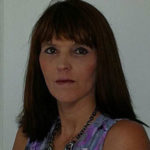The last time I hosted a workshop, the session was recorded so that attendees could access the material later. When I played the recording for myself, I was shocked at how many times I had uttered um. I couldn’t consciously remember using this filler word, but I knew that to become a more effective presenter, I had to eliminate it from my public speaking.
And I’m not alone. Nearly everyone, at some point, has used fillers when speaking; it’s a reality that’s been prevalent throughout history. But what causes us to use these fillers? Do they serve an important language function? Or does anxiety and nervousness play a vital role? According to experts, it’s a little of both.
“General anxiety makes us extremely uncomfortable with silence when we are speaking in front of people,” says Joanne Mathews, a public speaking coach from Oregon. “In this case, the fillers are our futile attempt to keep everyone’s attention.” She hints at the irony of this since silence between phrases is much more enthralling for an audience than ums and uhs.
In Mathews’ experience, the more impromptu the speaking opportunity, the more fillers we use. “Think of how most of us come across when we are put on the spot with little or no time to prepare,” she says. “We are thinking as we speak and, therefore, need to buy time to find the right words.”
Colorado-based speaking coach Andi O’Conor, who has worked with countless Fortune 100 companies, says this even affects people who are experienced speakers. “They go into a meeting or a presentation and they try to wing it.” What happens, she says, is that they end up saying uh or um because they don’t know what they’re going to say next.
George Lakoff, a distinguished professor of cognitive science and linguistics at the University of California at Berkeley, says uh, um, oh, ah and say are words in English that have a meaning in the pragmatics of communication. “These have been studied in great detail by linguists,” he says.
Pragmatics involves the social language skills we use in our daily interactions with others, including what we say, how we say it, our body language, and choosing and changing our language based on a given situation. Planning what to say is considered a pragmatic marker, with um and uh being two of these specialized markers. Some experts go as far as calling uh and um conversation managers and legitimate words. Even though they believe using too many fillers can be distracting, they suggest that “by signaling a delay is coming, a speaker avoids a silent gap in conversation that might otherwise prove confusing to a listener.”
But many professional speaking coaches suggest silence is more powerful. In O’Conor’s opinion, the most influential speakers know how to do a full stop on something before starting the next sentence, for impact. She also says silence can be a great service to your listeners because cognitively our brains are always a few beats behind during a speech, and so “we need pauses in order to digest and process the information.”
So, the big question is this: Can we stop ourselves from using fillers? If so, how?
According to O’Conor, aside from practicing and being fully prepared there’s plenty we can do both mentally and physically to prevent fillers from creeping into our speech. The simplest technique, which she uses with her own clients, is envisioning punctuation as we talk. “Imagine putting an invisible period on the end of your sentences while you speak. Imagine that you can see periods or commas in your speech as you’re speaking,” says O’Conor. She says this can be an instant cure for some people.
She also recommends three additional steps: power posing, smiling and countering any negative thoughts with positive ones. She suggests Amy Cuddy’s Wonder Woman pose, where you stand with your hands on your hips right before giving a speech or presentation. Cuddy, a social psychologist, has found that the pose increases your testosterone and lowers your cortisol. It also opens up your chest so you can breathe and speak better. Smiling increases your serotonin, which is the happy drug for your brain. Together, power posing and smiling can make all the difference in the world.
Mentally, there are what O’Conor calls the three gremlins: imposter syndrome (or self-doubt), thinking that your presentation or speech is boring and worrying that listeners might judge you. To psych yourself up, she recommends recording yourself saying, “I belong in this room, I have an interesting talk, and everyone in this room wants me to succeed,” and listening to it right before giving a speech or presentation.
Mathews thinks we spend too much time worrying about the ums and uhs and not enough time on other aspects of our public speaking. “Too many of us have been taught that ‘it’s not what you say, it’s how you say it.’ Wrong! It’s absolutely what you say.” Technique is important, but the most critical part of a great presentation is the message. “Remember that, like it or not, public speaking is the most effective way to bring about change. Speakers need to look at time in front of others as a way to bring about the change they want to see,” she says. Once a speaker has connected to why they are in front of an audience and what they want to accomplish, development and delivery come much more easily.
This article was published in January 2018 and has been updated. Photo by GaudiLab/Shutterstock








